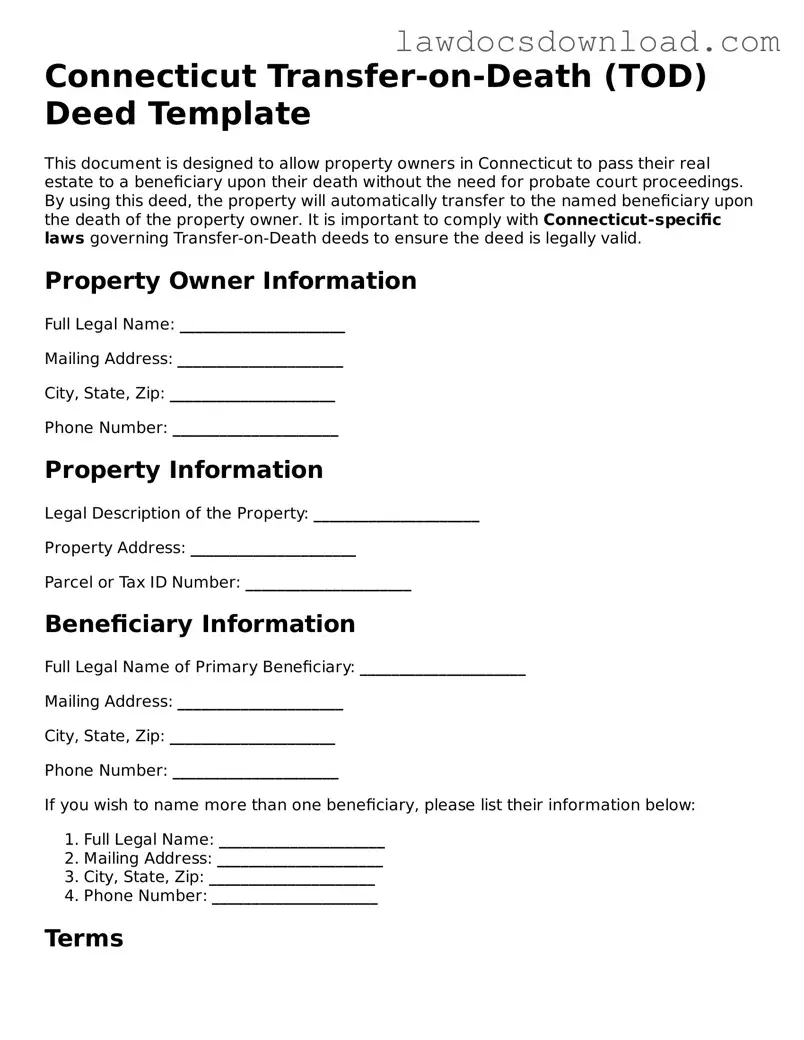Connecticut Transfer-on-Death (TOD) Deed Template
This document is designed to allow property owners in Connecticut to pass their real estate to a beneficiary upon their death without the need for probate court proceedings. By using this deed, the property will automatically transfer to the named beneficiary upon the death of the property owner. It is important to comply with Connecticut-specific laws governing Transfer-on-Death deeds to ensure the deed is legally valid.
Property Owner Information
Full Legal Name: _____________________
Mailing Address: _____________________
City, State, Zip: _____________________
Phone Number: _____________________
Property Information
Legal Description of the Property: _____________________
Property Address: _____________________
Parcel or Tax ID Number: _____________________
Beneficiary Information
Full Legal Name of Primary Beneficiary: _____________________
Mailing Address: _____________________
City, State, Zip: _____________________
Phone Number: _____________________
If you wish to name more than one beneficiary, please list their information below:
- Full Legal Name: _____________________
- Mailing Address: _____________________
- City, State, Zip: _____________________
- Phone Number: _____________________
Terms
This Transfer-on-Death Deed is revocable and does not take effect until the death of the owner(s). The property owner(s) retains full control and ownership of the property until their passing, including the right to sell or mortgage the property, or revoke the deed. Upon the death of the property owner(s), the property will automatically transfer to the beneficiary or beneficiaries named herein, subject to any liens or encumbrances on the property at that time.
Execution
To be legally valid, this deed must be signed by the property owner(s), notarized, and recorded with the Connecticut Town Clerk’s office in the town where the property is located before the property owner's death.
Date of Execution: _____________________
Owner's Signature: _____________________
State of Connecticut
County of _____________________
This document was acknowledged before me on _____________________ (date) by _____________________ (name of principal).
Notary Public Signature: _____________________
My Commission Expires: _____________________
Notice
This document does not substitute for legal advice. Consider consulting a lawyer to ensure that this Transfer-on-Death Deed complies with current Connecticut laws and meets your estate planning needs.
